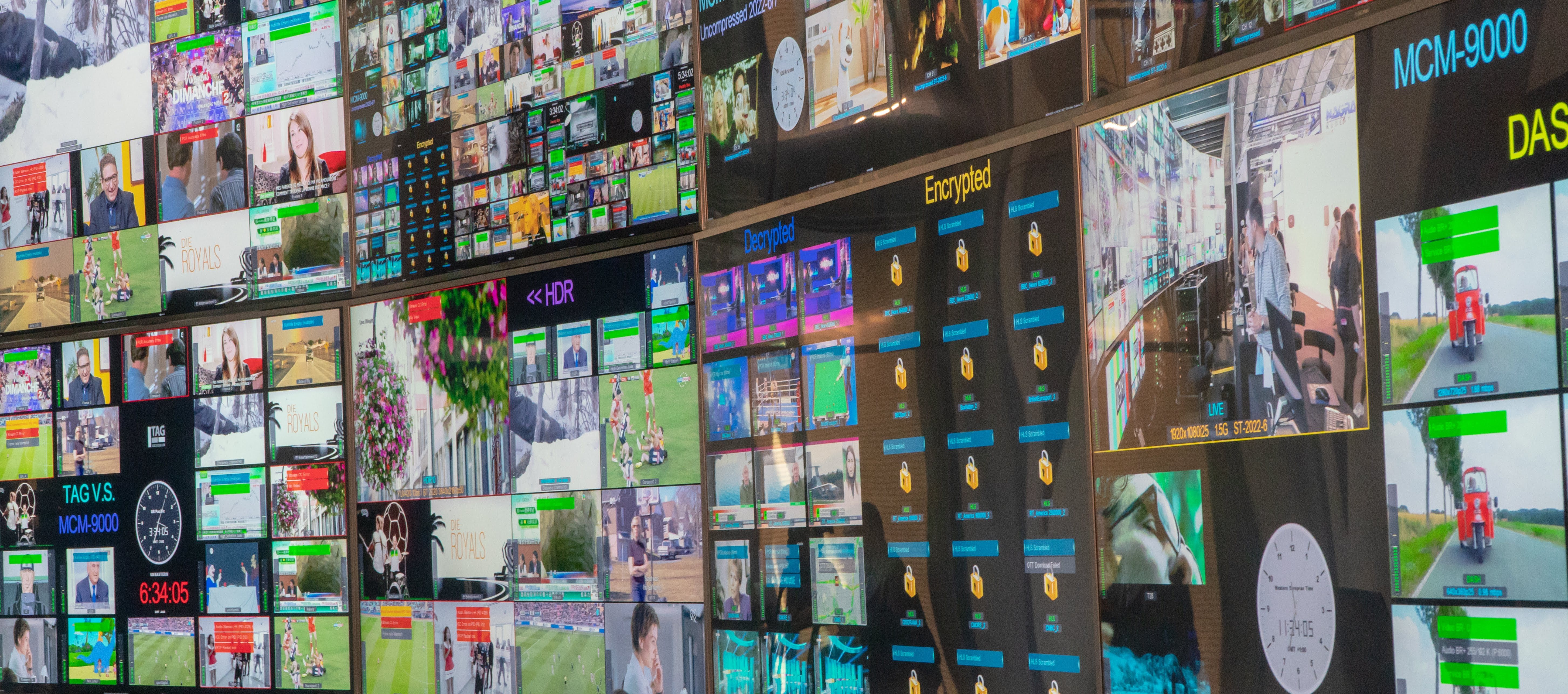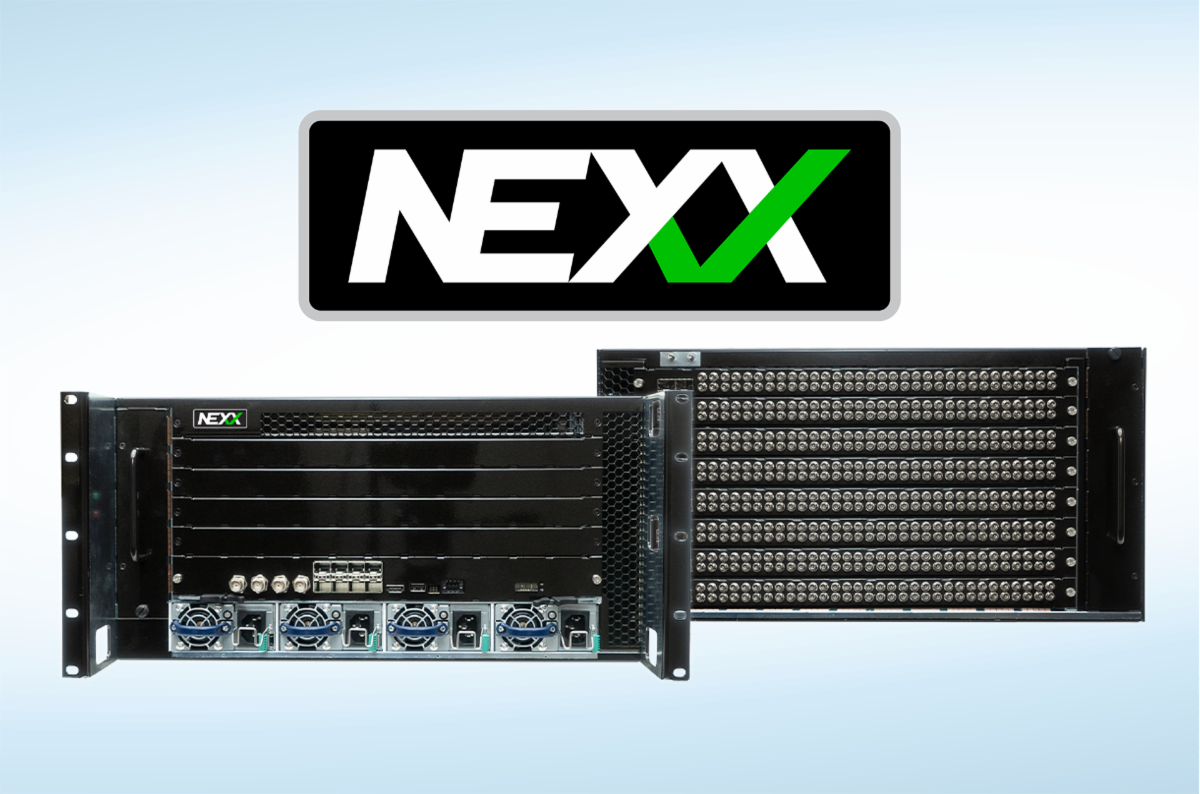Too Many Formats? Not a Problem for Today’s Multiviewers
Video monitoring solutions are about much more than just the picture

For an area of broadcast operations that changed little over the course of TV technology history, the monitoring display has experienced a rapid pace of development in a relatively short time period. From a passive monitor based on, first, the cathode ray tube and then LED or similar technologies that was able to only show one image at a time, it is now the multiviewer, showing multiple images at once. Not only that, it is able to perform more functions than just displaying pictures.
This has made multiviewers an increasingly crucial element of master control rooms (MCRs) at broadcast and playout centers, providing tools for compliance logging and checking, among other things. On top of these, as Ryan Wallenberg, vice president of engineering for Cobalt Digital, observes, the growing trend is for these units to accommodate a multitude of signal formats simultaneously. “More multiviewers are going hybrid, allowing for a mix of SDI, uncompressed IP SMPTE ST 2022-6/2110 and compressed MPEG2, H.264, HEVC, J2K and JPEG-XS,” he says.
Mix and Match
The ability to mix and match formats also extends to image quality and resolution. Wallenberg adds that new viewing systems can accept both HDR and SDR, with the capacity to convert to a common format for mixing SDR, HLG, PQ and SLOG3 and then switch to the required monitor format. “There is still lots of demand for 3G signal monitoring but with UHD output for higher quality output vs. 1080p output resolutions,” he comments. “UHD for inputs is more common in Europe and China than in the U.S.”
Today, it is unlikely that people are able to buy a display that is not UHD, according to John Mailhot, CTO for networking products at Imagine Communications. “In a mobile there’s usually a requirement that they have to do UHD but it often involves a trade-off,” he says. “It could be having fewer replays if they are working in UHD. The vehicle will be set up differently for different events with varying workflows and probably not run everything in UHD.”

Something that Mailhot considers is becoming the minimum requirement—”table stakes” in his words—is 1080p but in HDR. “I think there’s going to be an interesting amount of broadcasters who produce that as their primary format and then turn it into 1080i or SDI or other things for distribution. UHD is four times the bandwidth but adding HDR to an existing workflow is a much easier lift and arguably more impactful. In the multiviewer world we’re really starting to see people asking about HDR more than they used to.”
Flexibility is Key
Ketan Patel, product manager of multiviewer solutions at Evertz, observes that customers are now looking for three main things in multiviewers: density, format flexibility and advanced features.
“Density of solution in terms of rack space and power are key for applications like OB trucks,” he says. “The number of inputs and outputs per RU is a metric everyone is trying to maximize. Unfortunately, we don’t have one format or standard across the broadcast chain, so flexibility is a big issue with all facilities.
The professional video industry's #1 source for news, trends and product and tech information. Sign up below.

“Ideally, people want to have a singular platform that can monitor the incoming contribution feeds, the production/in-facility signal flows and the distribution feeds,” Patel added. “Monitoring is then visually showing the video and audio bars, the health of the video, the audio and key items such as SCTE triggers.”
Because of this, Patel continues, multiviewers are no longer merely for visualizing video/audio/data sources as multi-images on displays; they’re real-time probes for those sources.
“The probes are also not just concerned with the video/audio/data but also the transport protocols and bandwidth,” he said. “This synergy has become more important as facilities have many more signals to monitor and not enough eyeballs to watch them all.
“We developed the concept of monitoring by exception when customers found their operational staff were fatigued looking at hundreds of images for potential alarms,” he added. “With our ‘penalty box’ feature we can designate an area/display where only signals that have alarms appear so operators can focus on resolving those issues.”
Paul Briscoe, chief architect for TAG Video Systems, agrees that “monitoring hundreds or thousands of channels with human eyeballs is unreasonable,” which explains why probing, monitoring analysis, alarming and logging have become the norm.
“Visualization is still important,” he says, “and our Adaptive Monitoring allows any number of channels to be monitored but only those needing eyes on them in penalty boxes to be visualized.”
Move to IP and Cloud
A trend that Briscoe says TAG is also following is towards “pure software/IP-based monitoring platforms,” which will lead to the cloud. “That enables deployment in ground, cloud or hybrid scenarios on a global basis,” he explains. “Such a capability is almost infinitely scalable. Another important trend is integration with third-party systems, so we support open standards to enable orchestration and control interoperation with the widest array of other systems.”

At Lawo, Senior Product Manager of Media Infrastructure Stephan Türkay says the company is “absolutely moving to a cloud future,” with IP-based multiviewers being a prime candidate for that transition.
“Operational staff require multiviewers to be as low latency as possible,” he comments, “which can be tricky to achieve in an off-premise cloud deployment. We anticipate there to be an application-specific mix of deployments—on and off premise—as well as software and hardware technology to host the multiviewer function.”
Türkay adds that with the shift of traditional workflows for both production and playout to the cloud, there is the growing need to monitor signals as natively as possible. “Customers want to avoid the costly transcoding and transport costs of bringing signals back to the broadcast facility for monitoring using a traditional multiviewer,” he says.
While the general perception is that multiviewers will be installed in galleries or MCRs and cover the whole wall, Darren Gosney, technical sales manager for EMEA at Blackmagic Design, observes there is a growing realization that standalone screens can be placed anywhere in a broadcast or playout center.
“If they feature loop-throughs of each of their inputs, they can be located anywhere in the production chain,” he explains. This means different departments can each have a dedicated configurable unit in their space and the signals can be passed through to other parts of the facility, even being re-clocked to extend the signal distance further.``
Certainly a move on from the inert, dumb screens of the past.
Kevin Hilton has been writing about broadcast and new media technology for nearly 40 years. He began his career a radio journalist but moved into magazine writing during the late 1980s, working on the staff of Pro Sound News Europe and Broadcast Systems International. Since going freelance in 1993 he has contributed interviews, reviews and features about television, film, radio and new technology for a wide range of publications.
